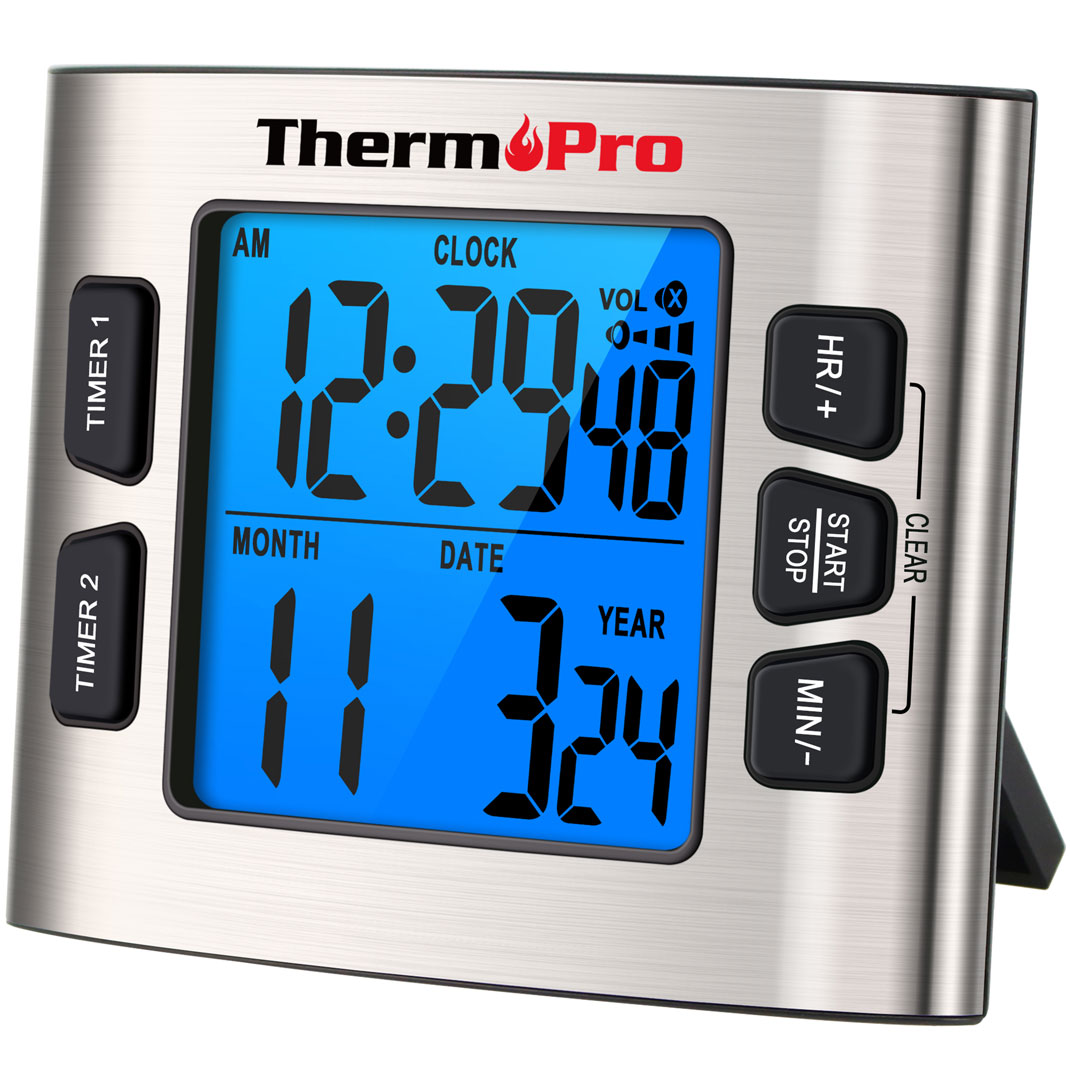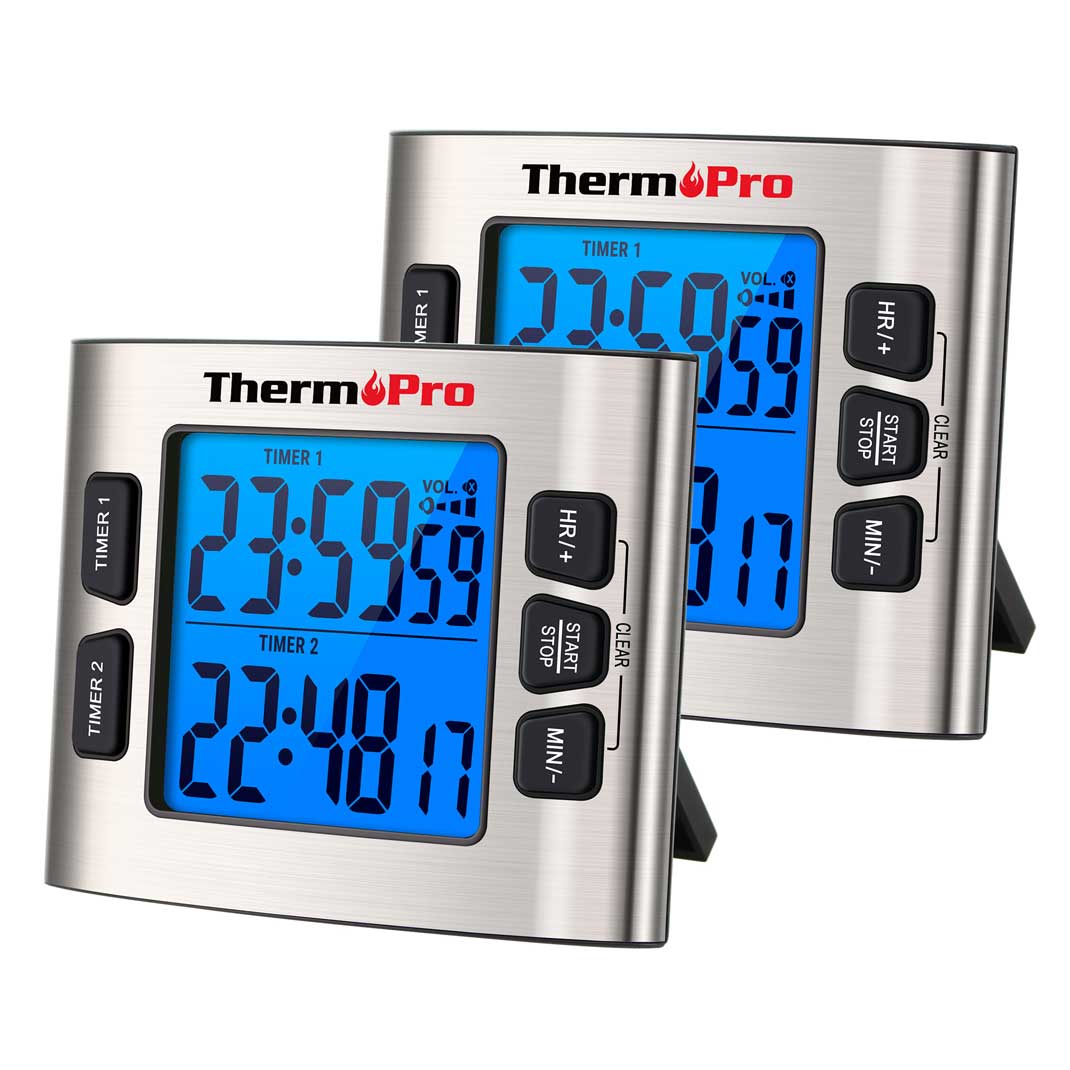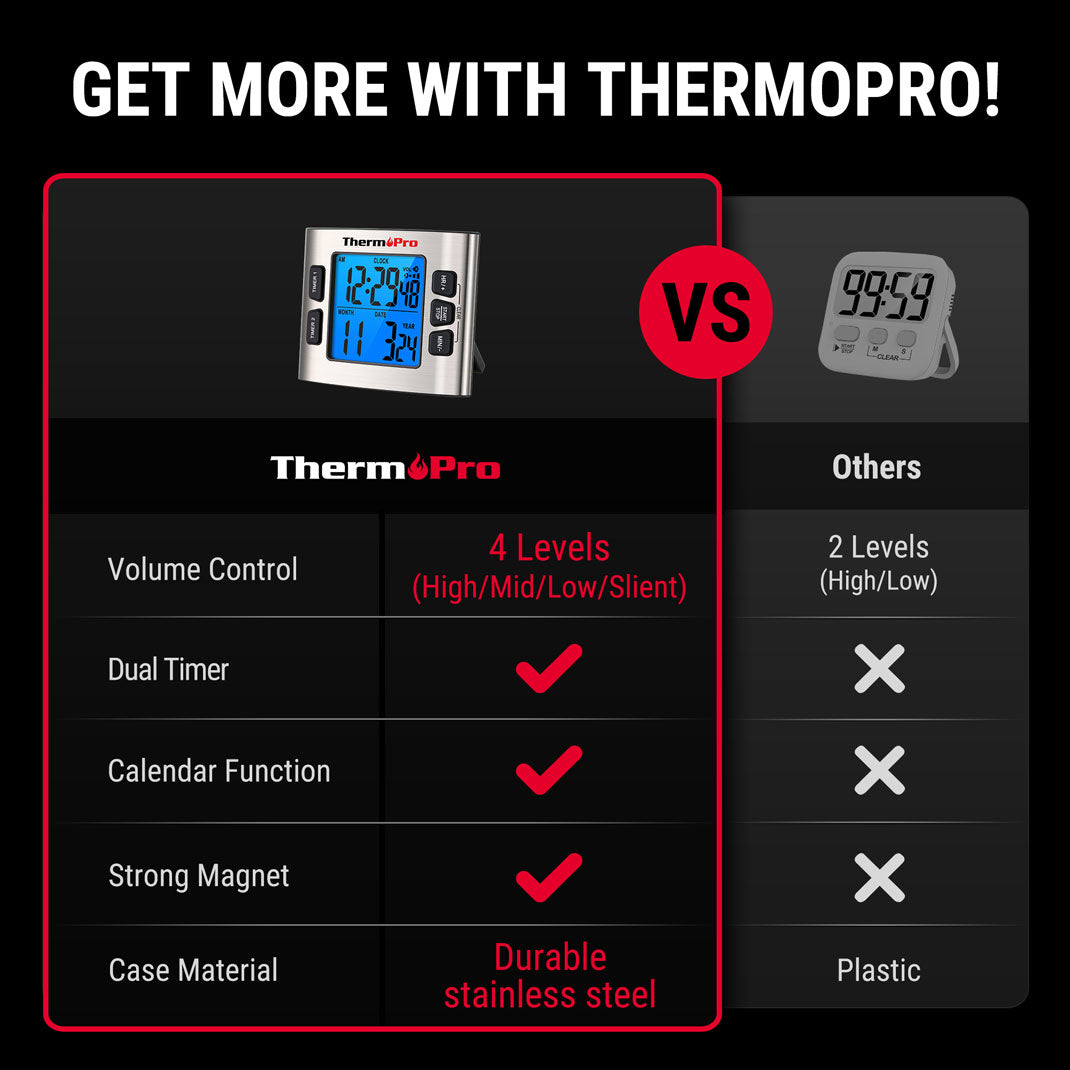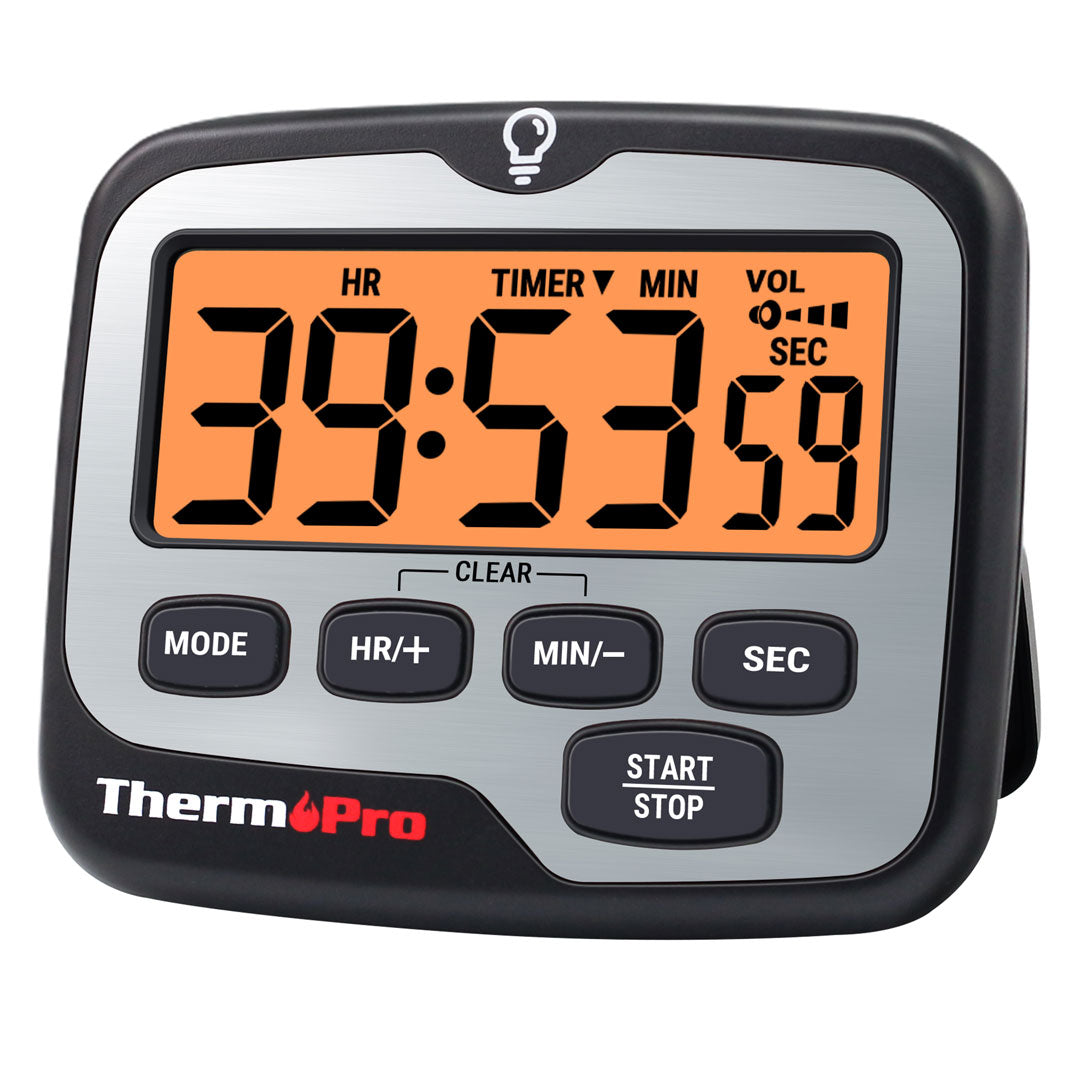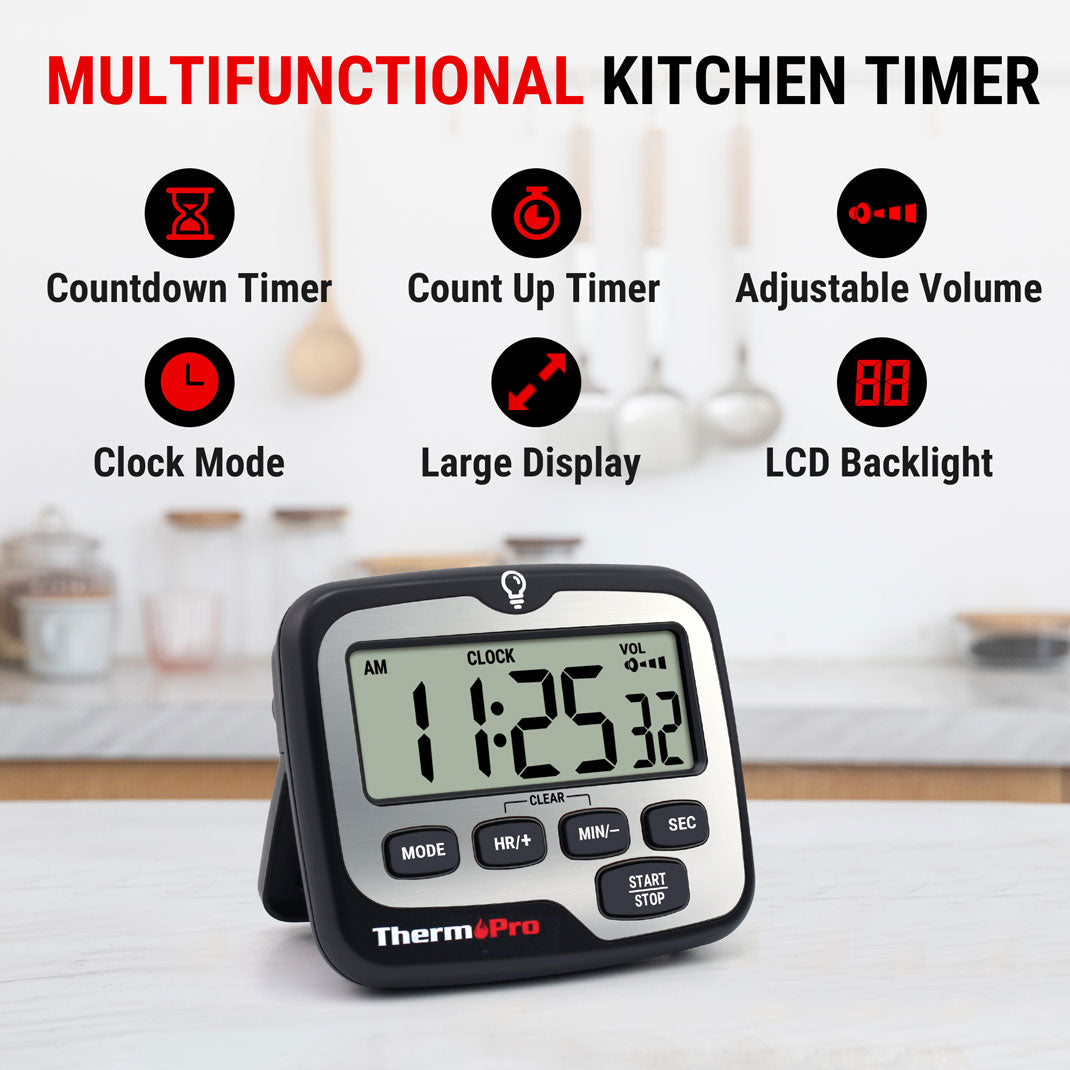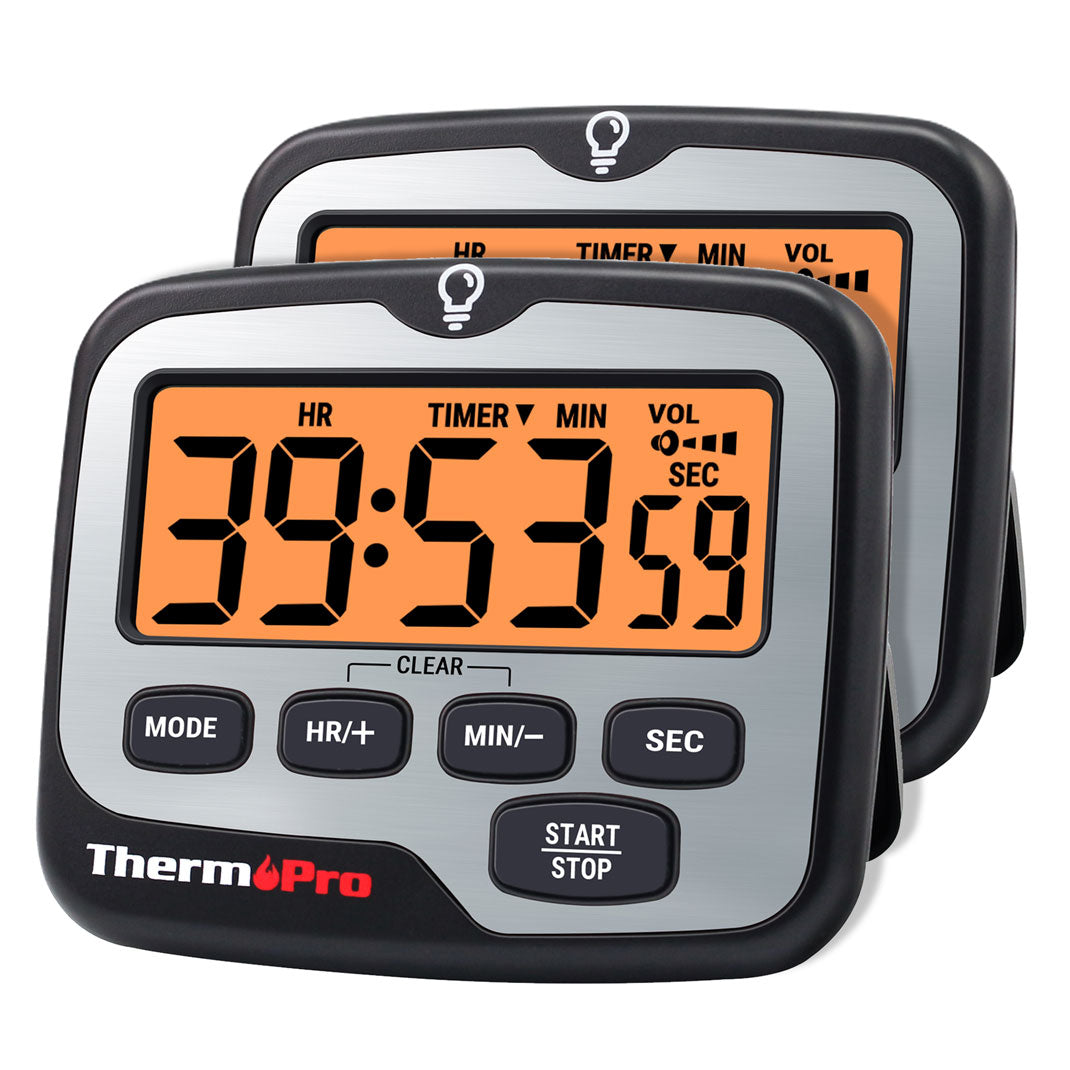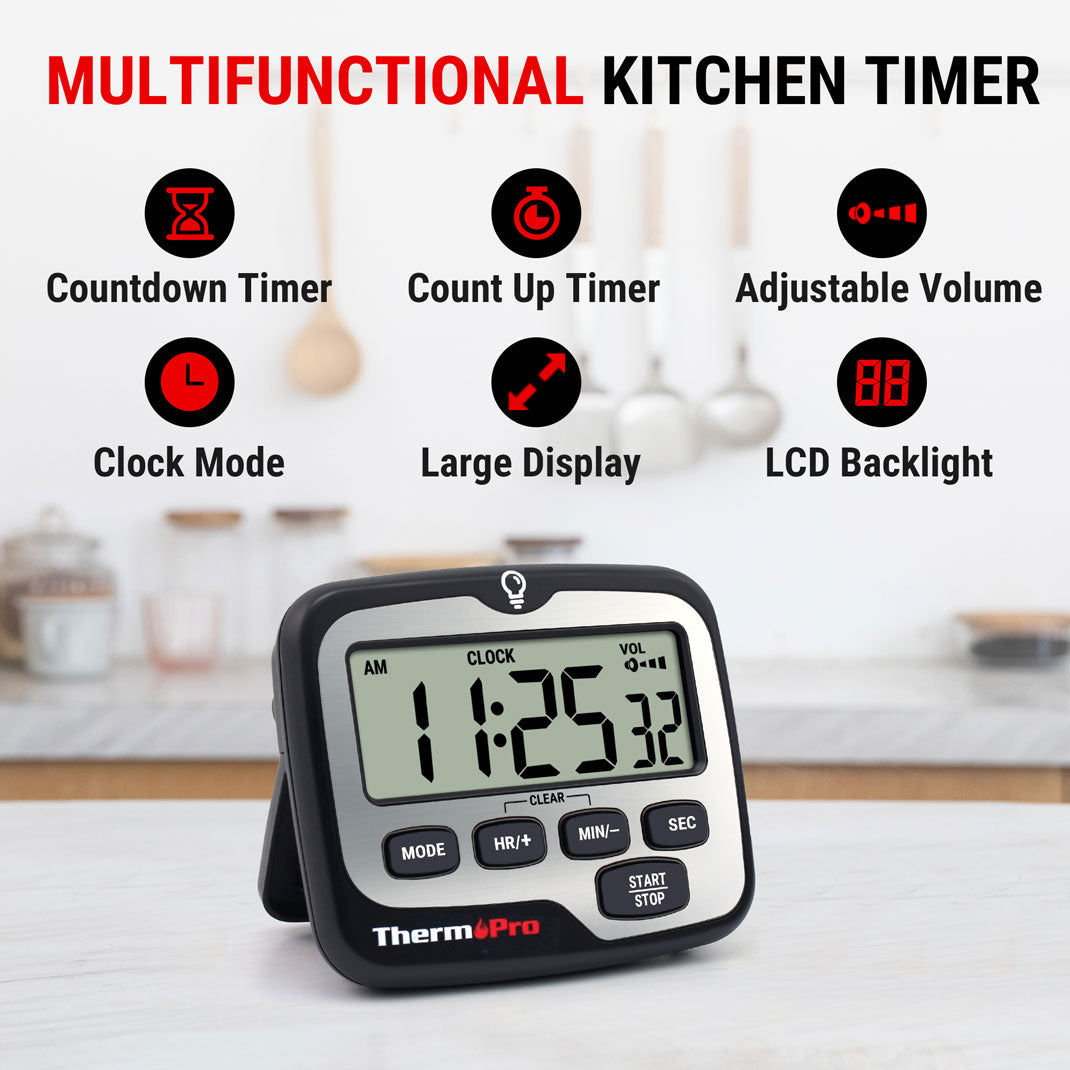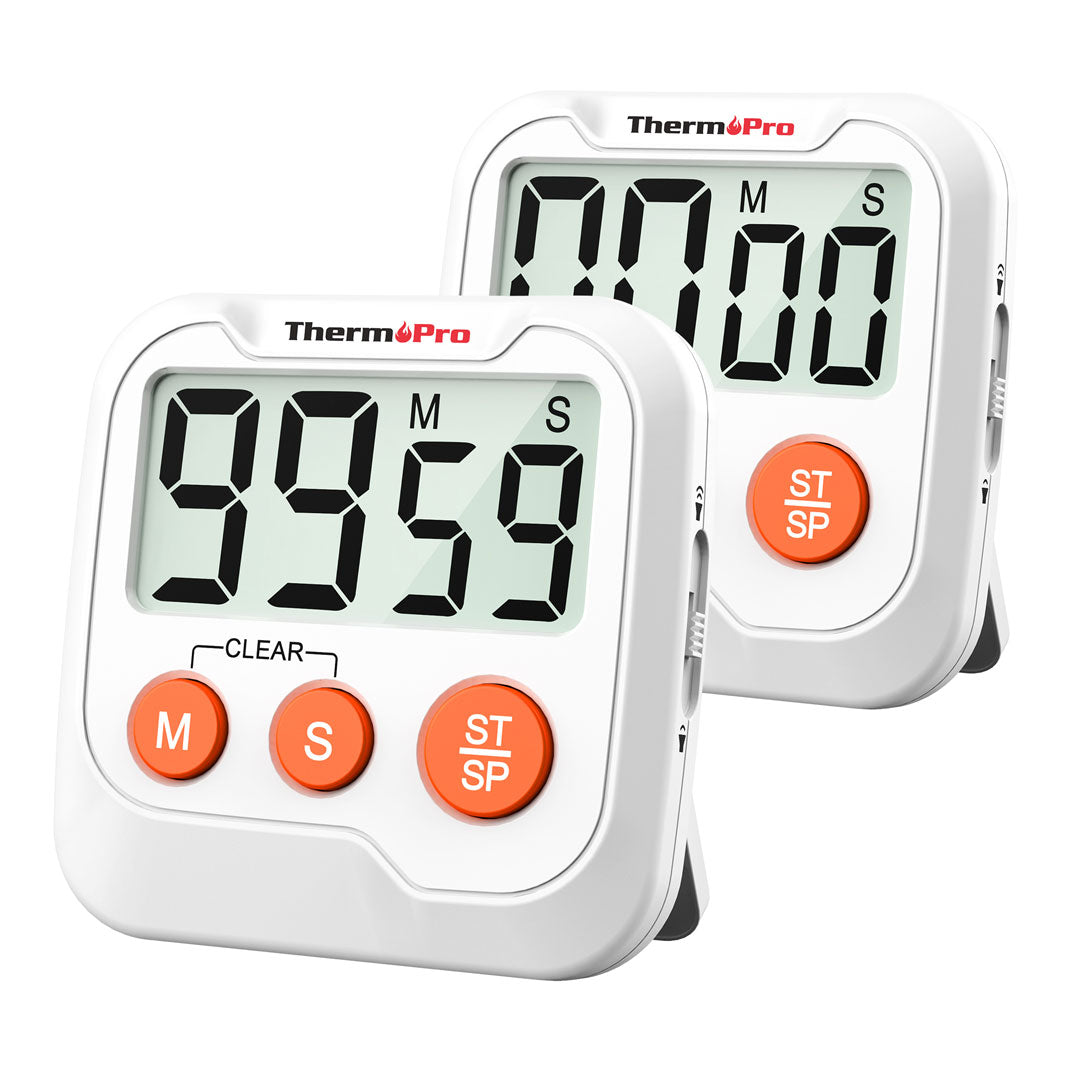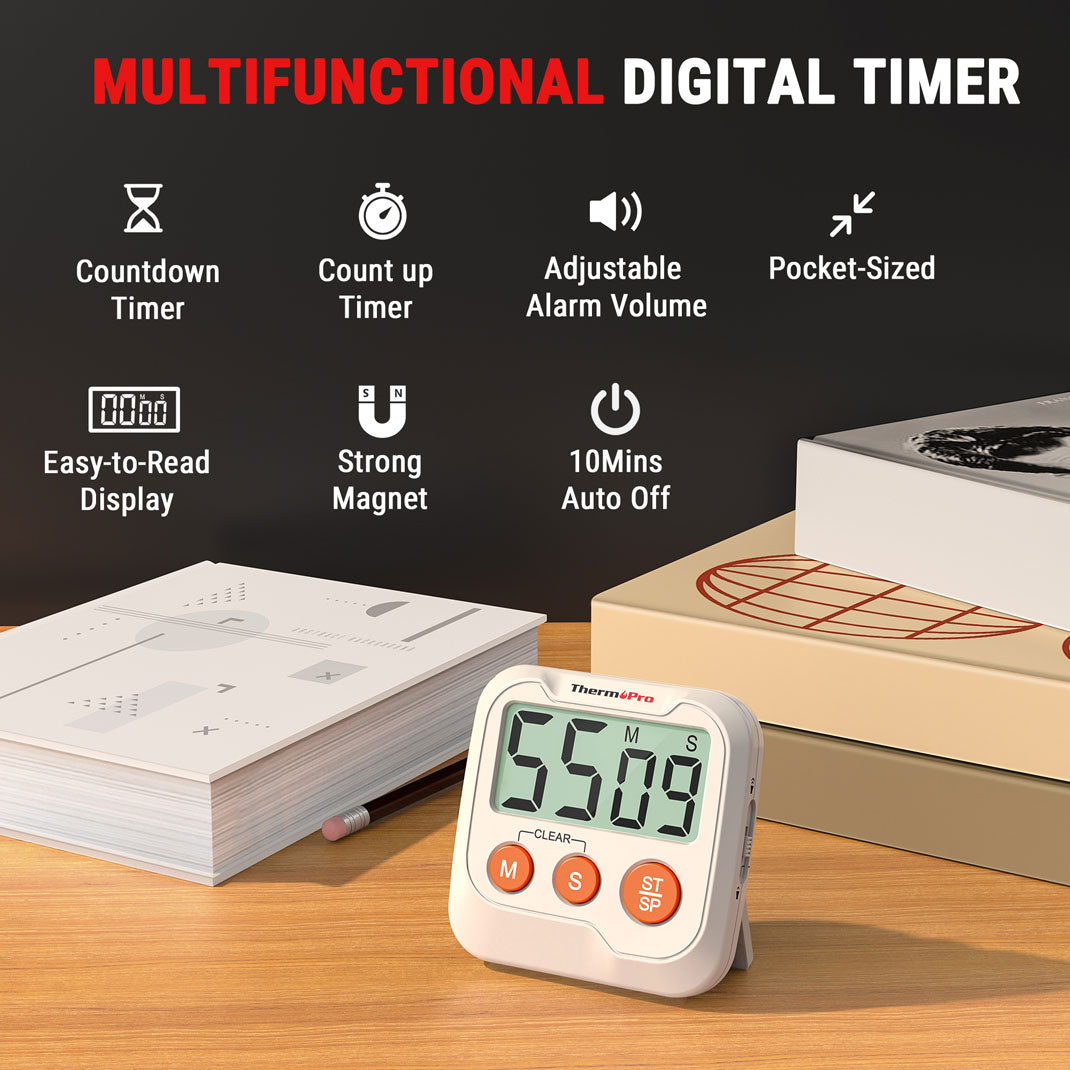How to Choose Cooking Timers?






 288 Comments
288 Comments
We've all been there. You're preparing a big dinner, chatting with guests, and suddenly—a faint, acrid smell of smoke wafts from the oven. You sprint to the kitchen, but it's too late. Your beautiful, once-perfect roasted vegetables are now a charred mess, and the smoke detector is screaming its disapproval. If this sounds familiar, you're not alone. The culprit? Poor time management.
Cooking is as much about timing as it is about flavor. Whether you're baking a cake, roasting a chicken, or simmering a hearty stew, every dish needs the right amount of heat and time. A few extra minutes can dry out a steak, while taking a pot off the stove too early can leave vegetables undercooked.
This is where cooking timers become a kitchen hero. They help you stay in control, stay organized, and create meals that taste just as you planned.
Why Your Phone or Oven Timer Isn't Good Enough
Let's be honest; we've all tried to cut corners. But when it comes to timing, shortcuts can lead to culinary disasters.
The Oven Timer Problem:
Your oven's timer is convenient but flawed. Its sound is often weak, easily drowned out by a running dishwasher or a conversation in the next room. Worse, if you turn off the oven to prevent overcooking, the timer often stops too. It's anchored to one location, meaning you can't take it with you to the garden or home office.
The Smartphone Trap:
Using your phone as one of your primary digital timers for cooking seems logical. But let's face it: your phone is a hub of distraction. A notification for a new email, a text from a friend, or an Instagram alert can easily make you swipe away the timer, forgetting it entirely. Furthermore, who wants to touch their expensive phone with greasy, flour-dusted, or raw chicken-covered hands? It's unhygienic and risky.
A dedicated device, designed for a single purpose, eliminates these risks. It's the reliable, hygienic, and distraction-free solution your kitchen deserves.
Why You Need a Cooking Timer?
Using a timer isn't just about avoiding burned food; it's about elevating your entire cooking game.
Consistent, Perfect Results
Perfect jammy soft-boiled eggs, al dente pasta, a medium-rare steak, or a flawlessly risen soufflé all depend on perfect timing. Cooking timers making a countdown ensure your results are consistent every single time, turning you into a more confident cook.
Health and Safety
Cooking meat to a safe internal temperature is critical. Using a timer alongside a thermometer ensures food cooks long enough to kill harmful bacteria but not so long that it becomes dry. Proper timing also prevents overcooking, which can create unwanted textures or even harmful compounds.
Prevents Food Waste
In today's economy, wasting food is like throwing money in the trash. A forgotten dish that burns is a total loss of ingredients and effort. A simple timer is your first line of defense against this waste, saving you money and frustration.
Multi-Tasking Made Easy
From boiling pasta to roasting vegetables, most home cooks juggle multiple dishes at once. A kitchen timer for cooking allows you to keep track of different tasks without relying on memory. You can focus on chopping vegetables or preparing sauces while the timer quietly keeps watch.
What's more, a timer frees your mind. Once you set it, you can fully focus on other tasks—helping the kids with homework, setting the table, or preparing another part of the meal—without that underlying anxiety of "Did I forget something?" It's the key to a calm, organized, and enjoyable cooking experience.
Beyond Cooking
The usefulness of a kitchen timer extends far beyond the stove. Use it to time exercise intervals, laundry cycles, children's "time-outs," or work sessions following the Pomodoro Technique. It's a versatile tool for your entire life.
How Does a Kitchen Timer Work?
A kitchen timer is essentially a countdown device. You set the desired time, and the timer begins making a countdown until it reaches zero.
- Mechanical timers use a spring that ticks down to zero.
- Digital timers for cooking use electronic circuits and are powered by batteries, providing more precise measurements and often louder alarms.
Most modern kitchen cooking timers feature a simple interface: a start/stop button, an up/down time selector, and a clear display so you can see the remaining minutes at a glance.
How to Choose the Right Cooking Timer
Not all timers are created equal. Here's what to consider before buying:
- Type: Mechanical timers are classic, but digital models are more accurate and easier to read.
- Loudness & Alarm: The most critical feature. Can you hear it from another room with the door closed? Testimonials and product descriptions often mention this.
- Display: A large, bright screen ensures you can check the time even from across the kitchen.
- Features: The buttons should be large and responsive. The display must be large, high-contrast, and easy to read from a distance. You should be able to operate it with a knuckle or the side of your hand when your fingers are dirty.
- Ease of Placement: Magnetic backs, stands, or hooks make it easy to attach the timer to a fridge or oven door.
- Battery Life: Look for a model that uses standard batteries (like AAA) and boasts a long life. You don't want it dying in the middle of holiday baking.
What Is the Best Cooking Timer?
After evaluating countless models, one timer consistently rises to the top for its flawless execution of the basics: the ThermoPro TM02 Kitchen Timer. This isn't an overly complicated gadget; it's a masterclass in simple, reliable design.
Key Features:
- Dual Timer for Effortless Multi-Tasking
Run two separate countdowns at the same time, ideal for handling different activities—whether you're cooking, exercising, studying, or tracking kids' screen time. Each timer can be set for up to 23 hours 59 minutes to suit any schedule.
- Stylish & Stainless Steel Build
Made with a high-quality stainless steel exterior, this digital timer is stronger and more elegant than ordinary plastic designs—perfect for busy kitchens or home offices.
- Adjustable Alerts & Silent Option
Pick from three alarm volumes (70–105dB) or switch to silent mode when you need peace and quiet. A handy memory function saves your previous setting for instant reuse.
- Clock + Calendar & Flexible Mounting
Switch over to a clock with calendar display when you're not timing. Use the magnetic back or foldable stand to place it on the fridge, countertop, or desk with ease.
- Bright, Easy-to-Read Display
A large 2.6-inch backlit LCD screen with bold digits offers excellent clarity, so you can read the time clearly—even in a dim kitchen or late at night.
Whether you're baking bread, boiling eggs, or roasting a turkey, the ThermoPro TM02 takes the guesswork out of timing.

Practical Tips for Using Cooking Timers
- Set Milestone Alerts: For complex recipes, set intermediate alarms to remind you when to stir, add ingredients, or reduce heat.
- Use Multiple Timers: Dual timers help you handle side dishes and main courses at once.
- Check Battery Life: Replace batteries regularly to avoid silent countdowns.
- Pair with a meat Thermometer: Timing plus temperature monitoring ensures the safest, tastiest results.

Final Thoughts
Great meals don't happen by accident—they're the result of careful preparation and precise timing. A reliable kitchen timer for cooking takes the stress out of mealtime, giving you confidence whether you're roasting a chicken, baking cookies, or slow-cooking chili.
Investing in a high-quality timer like the ThermoPro TM02 Kitchen Timer means you'll never again wonder if your dish is overcooked or underdone. Start making a countdown to better meals today and enjoy perfect results every time.
Commentaires
Vous aimerez peut-être aussi
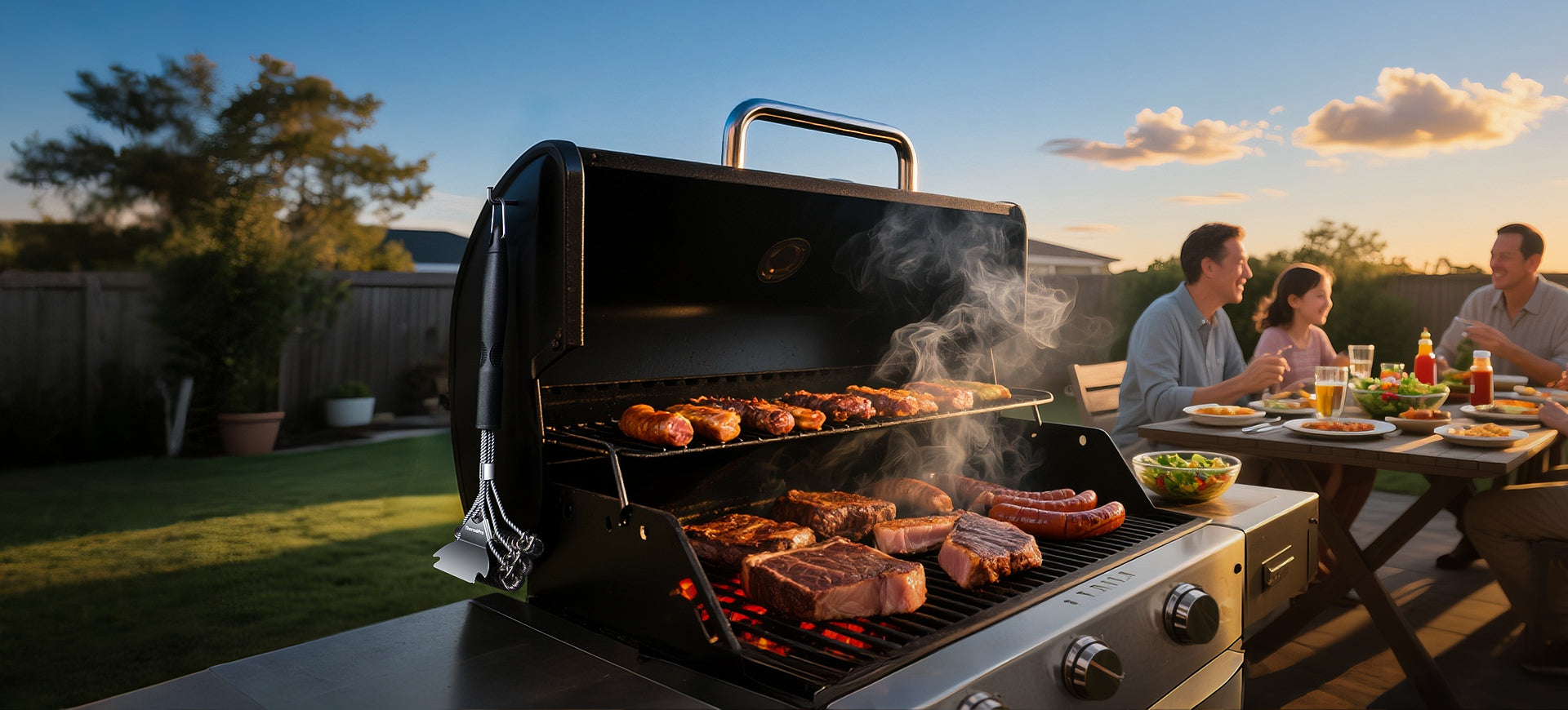
How Do You Clean a BBQ Grill?

Augmentez votre productivité avec une minuterie

Pourquoi vous avez besoin d'une minuterie de cuisine







